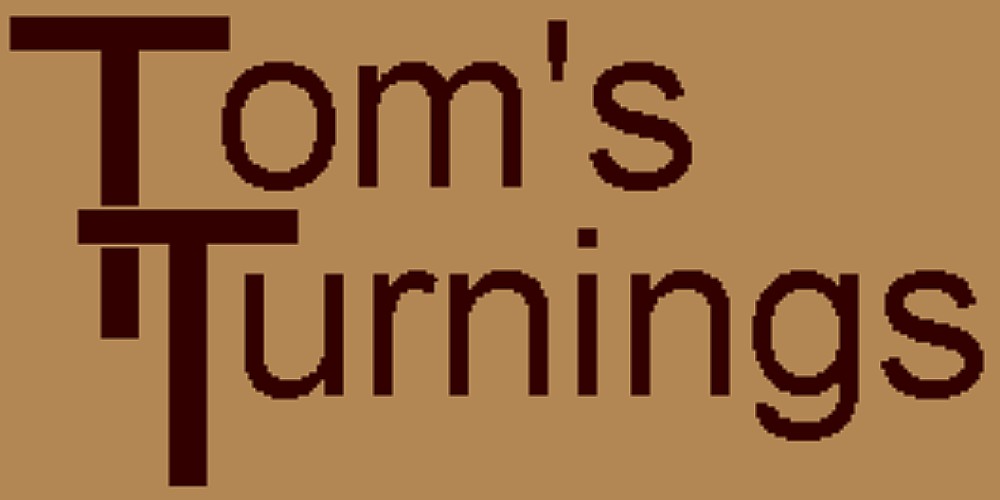USE & CARE INSTRUCTIONS
BOTTLESTOPPERS: There are several types of bottlestoppers shown on this website. Some are made from a single piece of wood. Others are made by gluing together several pieces of hardwood using a foodsafe, waterproof glue. In both cases, the bottlestoppers are “turned” on a lathe to produce their final shape. After they are sanded, they are finished with spray lacquer, to produce a shiny, long lasting finish that should last a lifetime. Never immerse the bottlestopper in water! To clean, wipe with a damp cloth and dry promptly. There are several types of bases used. Some are cork, which is more like the traditional items used to seal a wine bottle. Some are made of plastic, which is inexpensive, and easily cleaned. Either of these bases are well suited for long term use. Some of the metal bases have chrome, gold, gun metal, or titanium plating. In each of these, a thin, clear epoxy finish is applied to protect and preserve them. Using these stoppers for prolonged amounts of time (for example, stored in the wine bottle in the refrigerator) can cause the finish to pit, so it is therefore not recommended. Finally, the Stainless Steel bases are the best choice. They will never pit, are completely food safe, easily cleaned, and should last a lifetime.
BOWLS: There are several types of bowls shown on this website. Some are made from a single piece of wood. Others are made by gluing together several pieces of hardwood using a foodsafe, waterproof glue. In both cases, the bowls are “turned” on a lathe to produce their final shape. They are then sanded, then handrubbed with several coats of a natural, foodsafe finish. Bowls that are likely to be used for food are typically finished with Walnut oil. The ones less likely to be used for food (segmented bowls, for example) are finished with a wipe-on polyurethane. While both types of bowls can be used for food, remember that some types of food may harm the finish. It is better to use them for hard, dry foods rather than soft, wet foods. For example, Apples, oranges, nuts, and wrapped candy would be fine, and not likely to harm the finish. Soups, applesauce, or coleslaw are more likely to stain, and potentially ruin the finish.To clean any of these bowls, wipe with a clean, damp cloth, then dry immediately. Never submerge the bowl in water, or wash in a dishwasher!
CUTTINGBOARDS: The cuttingboards shown on this website were made by gluing together several strips of hardwood using a foodsafe, waterproof glue. They are then sanded, then handrubbed with several coats of a natural, foodsafe finish. To clean, wipe with a clean, damp cloth, then dry immediately. Never submerge this board in water, or wash in a dishwasher! To keep it looking great, occasionally wipe with a cuttingboard finish, then rub dry. Helpful Hint: Only cut on one side of this board, and keep the other side for display!
GOBLETS: These goblets are made from exotic hardwoods and finished with wipe-on polyurethane to provide a durable finish that should last a lifetime. They’re food safe, so it’s perfectly safe to drink from them. However, prolonged exposure to dark wines will probably stain the surface. Never immerse the goblets in water, or wash them in a dishwasher! To clean them, simply wipe them clean with a damp cloth and dry promptly.
PLATTERS: There are several types of platters shown on this website. Some are made from a single piece of wood. Others are made by gluing together several pieces of hardwood using a foodsafe, waterproof glue. In both cases, the platters are “turned” on a lathe to produce their final shape. They are then sanded, then handrubbed with several coats of a natural, foodsafe finish. Platters that are likely to be used for food are typically finished with Walnut oil. The ones less likely to be used for food (the more ornamental ones) are finished with a wipe-on polyurethane. While both types of platters can be used for food, remember that some types of food may harm the finish. It is better to use them for hard, dry foods rather than soft, wet foods. For example, Apples, oranges, nuts, and wrapped candy would be fine, and not likely to harm the finish. Soups, applesauce, or coleslaw are more likely to stain, and potentially ruin the finish.To clean any of these platters, wipe with a clean, damp cloth, then dry immediately. Never submerge the platter in water, or wash in a dishwasher!
VASES, BOXES & URNS: The vases shown on these pages are made from real wood. They were intended to look pretty, not hold water. It isn’t recommended to use them to hold real flowers, since the insides aren’t sealed properly, and the water would ruin them. If you want to put flowers in them, fake flowers are the way to go!
Boxes are little more than small, lidded bowls. They’re great for storing small items, like jewelry and rings. They’re finished with wipe-on polyurethane, to provide a durable finish that should last a long time. To keep the box looking good, wipe it occasionally with any good furniture polish.
The outside surface of all of the urns are sealed with several coats of wipe-on polyurethane, to provide a durable finish that should last an extremely long time. Similar to the vases, these urns are are not designed to hold liquids. If the urn is used to store ashes, it is highly recommended to seal the plug or lid closed using a strong adhesive, such as Superglue. Be very careful while doing this, since superglue spilled on the urn’s finish will probably ruin it. To keep the urn looking good, wipe it occasionally with any good furniture polish.
